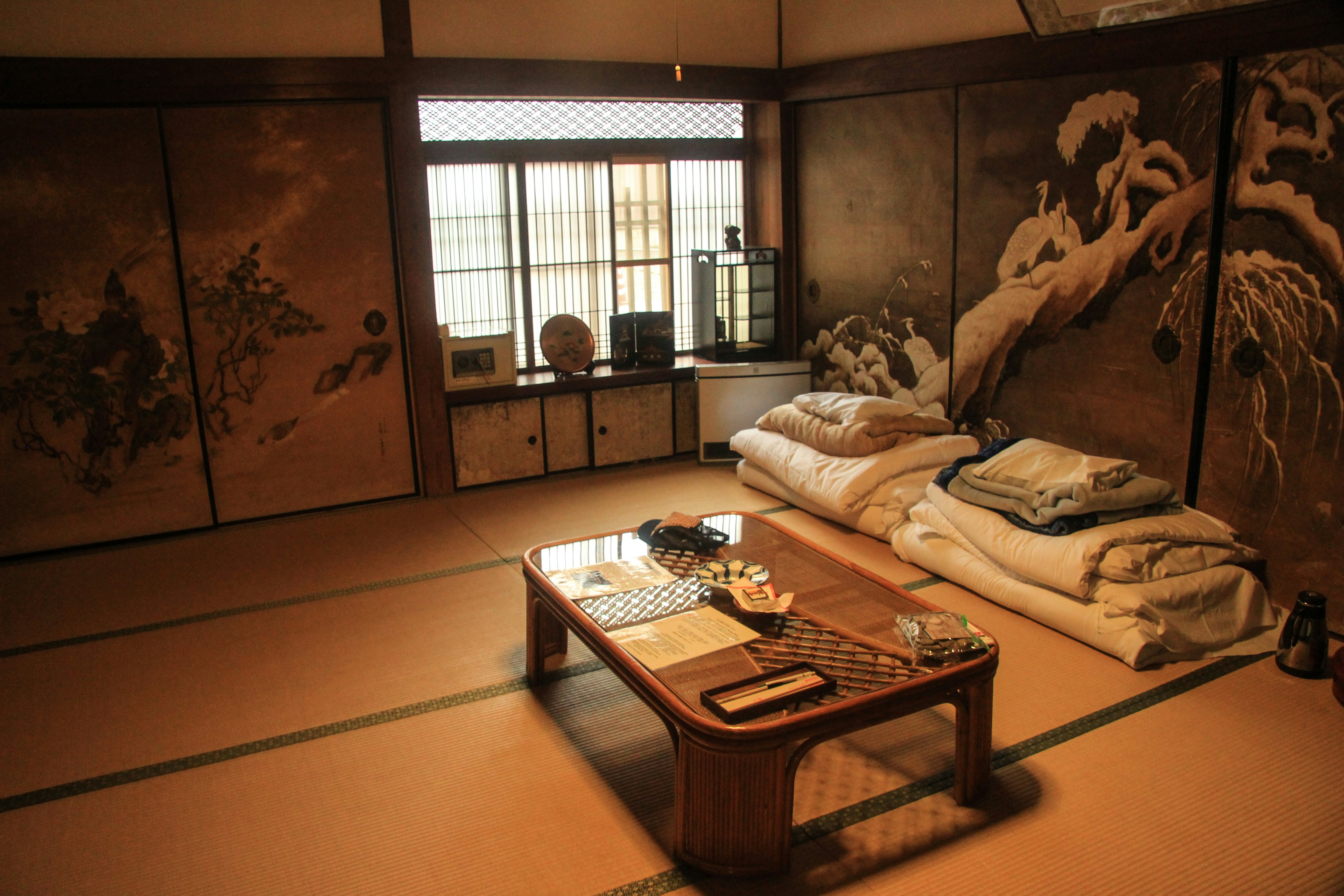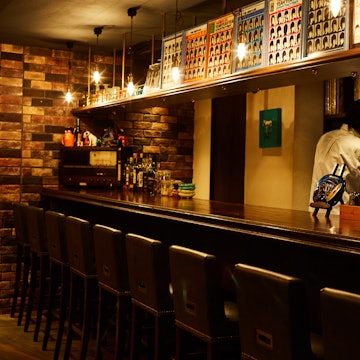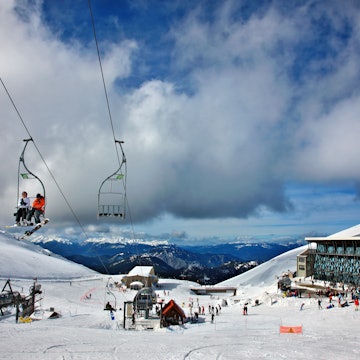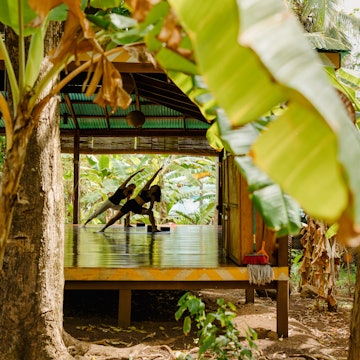
Rising sun: Back to the best of Japan
Sponsored by

Feb 23, 2023 • 7 min read

What makes Japan such a breathtaking destination hasn’t gone anywhere © Sean Pavone / Shutterstock
The uncertainty of the pandemic years was challenging if you were hoping to travel to Japan. With the country closed to tourism for years, it was hard to know when you’d be able to go back, and what the country would be like when you could.
Luckily, what makes Japan such a breathtaking destination hasn’t gone anywhere. Truly timeless in its appeal, this incredible country has a long list of greatest hits to beckon both first-timers and repeat visitors.
Now that the country is open again, we’ll revisit the best of Japan – the traditional culture, the exquisite cuisine and amazing outdoor adventures, and highlight why the country should be at the top of your bucket list yet again.

Staying in a Ryokan and Relaxation at Japanese Onsen
Stepping into a ryokan feels like you have truly arrived in Japan. The welcoming smell of tatami, the shuffle of slippers down the halls, and traditional yukata robes to look the part. If you want quintessential Japan all in one package, a stay at a ryokan is hard to beat.
Here you can experience Japanese omotenashi (hospitality) at its finest. Think being served tea in your room upon arrival, having your futon magically made for you while you’re away at dinner, to multi-course kaiseki meals, a taste of what gives washoku (traditional Japanese cuisine) its place on the UNESCO list of Intangible Cultural Heritage of Humanity.

To top it off, many ryokan feature shared onsen or sento facilities included as part of the room charge, with some even offering private bathing options that may be reserved by guests for set time periods or in-room private baths for use at your leisure. For the ultimate in relaxation, book a ryokan in an onsen town and hop from one glorious hot spring to the next.

Modern, exciting Tokyo and traditional Kyoto
The juxtaposition of Japan’s modern and ancient capitals is by now such classic imagery that it would be difficult to imagine the highlights of Japan without them.
While both Tokyo and Kyoto have perfected a fusion of traditional culture and the conveniences of modern-day living, there’s no doubt that these two cities lean into their conventional stereotypes.

On a trip to Tokyo, you can be guaranteed the exhilaration of the neon lights and busy crossings of the biggest metropolis on earth, while Kyoto’s vast network of historic temples and shrines, alongside immaculate gardens, is the very image of traditional Japan.
Well-connected via rail, the jaunt between Tokyo and Kyoto is an easy one, with the fastest option the shinkansen bullet train (2-3 hours). Other bullet trains easily connect to other parts of the country as well, making these two cities the perfect springboard to get off the beaten track.

Japanese cuisine and its delectable noodles
It’s safe to say that Japanese cuisine would look very different today without its wide range of noodle dishes. Many visitors know of popular noodle types – like ramen, udon, soba and sōmen – but few know how truly versatile they can be.
In addition to the steaming bowls of ramen and curry udon that are perfect winter-warmers in the cooler seasons, the simplicity of cold noodles like zaru soba or tsukemen with their separate dipping sauces, or shiru-nashi “brothless” ramen where the broth-infused noodles carry all the taste without the hot soup, make for refreshing alternatives in the warmer months. Throw in the countless regional varieties, and you could easily spend your time exploring the country through its noodle culture.

For instance, rich Sapporo miso ramen comes from the northern island of Hokkaido, where it is often topped with seafood from the region’s ports. Thin, straight noodles and hearty broth are the calling cards of Hakata ramen, from Fukuoka in southern Japan. And Kitakata ramen from its namesake city in Fukushima is based on soy sauce and thick, wavy noodles.
For those who like to get more hands-on, seeking out a noodle-making class is a great guided window into Japanese cooking. If visiting in summer, a nagashi-somen experience, where sōmen noodles flow down a bamboo slide in ice water while you “catch” them with chopsticks, is a fun and exciting way to enjoy these thin Japanese noodles.

Cherry-blossom viewing
If you can time your trip for it, there’s nothing quite like seeing Japan shrouded in pink-white sakura blooms during spring. The blooming season is short-lived but celebrated intensely. From first bloom to the final scattering of fallen blossoms disappearing with the breeze, the Japanese have more than 70 terms to precisely describe the different stages and cultural phenomena associated with the season.
Cherry blossom viewing, known as hanami, is a chance to picnic under the blooms, experience light-up events in the evenings, and even take in the seasonal glory from a rowboat.

The cherry blossom forecast released in January each year will give you a relatively accurate estimate of blooming times (typically around late March-early April in the Osaka, Kyoto and Tokyo areas). Giving yourself a wider window and flexibility in schedule – and getting off the beaten path, avoiding the crowds at the most popular destinations – are your best bets for increasing your chances of catching peak bloom.
Since sakura flower earliest in warmer climates, you can “chase” the blossoms from Okinawa in the south as early as January all the way through the Tohoku region to Hokkaido in the north, from late April and extending through May.

Okinawa cultural traditions
Okinawa, a popular sub-tropical getaway spanning more than 160 islands and 2,000 miles, has long been a draw for both domestic and foreign visitors alike for one reason in particular: it doesn’t feel like the rest of Japan.
Balmy weather and pristine beaches aside, this picture-perfect archipelago boasts a rich heritage of distinct performing art forms born out of the autonomous Ryūkyū Kingdom which ruled Okinawa for 450 years from the 15th to the 19th centuries and was further influenced by other cultures through trade.

There are many performing arts to enjoy on a trip to this unique part of Japan, including the UNESCO Intangible Cultural Heritage-listed Kumiodori, a blend of spoken storytelling with classic Ryūkyūan music, song and dance in a refined stage art that was first created to entertain visiting envoys, and Ryūkyūan dance, a designated National Important Intangible Cultural Property that covers various traditional and creative Okinawan dances.
An instrument that features heavily in these performances is the sanshin. This Okinawan long-neck stringed instrument was used for entertainment in the royal court and has since become a mainstay of local folk songs.
A convenient place to take in a performance of Okinawa’s traditional arts is at the National Theatre Okinawa, which can pre-book tickets online in English.

Shiretoko National Park
From Japan’s far south to extreme north, Shiretoko National Park on Hokkaido’s northernmost promontory takes its name from the indigenous Ainu word for “Land’s End”.
This wild, pristine landscape and UNESCO World Natural Heritage site is home to dozens of land and marine mammals, such as brown bears (Ursus arctos yezoensis), spotted seals and orcas, as well as hundreds of bird species that find refuge in the dramatic cliffs, some up to 100m high, overlooking the Sea of Okhotsk.

The perfect destination for the adventure-seeking outdoor enthusiast, Shiretoko National Park offers drift ice walking on the west coast in winter, guided snowshoeing and hiking, picturesque waterfalls and lakes, and sightseeing and wildlife spotting cruises, including whale watching off the east coast and brown bear spotting along the rocky shoreline in one of the most densely populated habitats of brown bears in the world.
Intersperse your intrepid wanderings with visits to the peninsula’s plentiful hot springs. Kamuiwakka Hot Falls is a natural waterfall with hot spring water pools that increase in temperature the further you climb (be aware of falling rocks and pay attention to signage for areas that are off limits). For an end-of-day soak, Utoro Onsen is the largest onsen resort in Shiretoko with many accommodation options and open-air onsen with an ocean view.
Sponsored by Japan National Tourism Organization
As a travel entertainment and inspirational media outlet, we sometimes incorporate brand sponsors into our efforts. This activity is clearly labeled across our platforms.
This story was crafted collaboratively between Japan National Tourism Organization and Lonely Planet. Both parties provided research and curated content to produce this story. We disclose when information isn’t ours.
With sponsored content, both Lonely Planet and our brand partners have specific responsibilities:
-
Brand partner
Determines the concept, provides briefing, research material, and may provide feedback.
-
Lonely Planet
We provide expertise, firsthand insights, and verify with third-party sources when needed.















